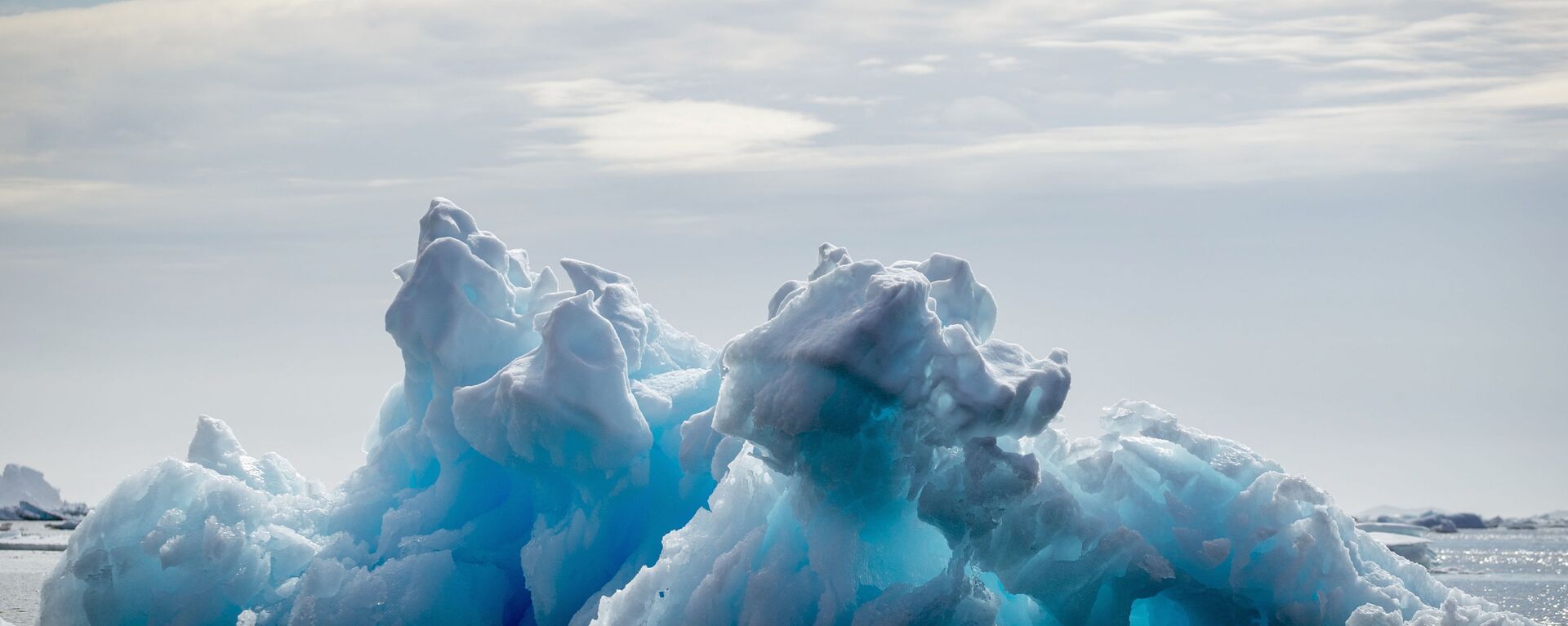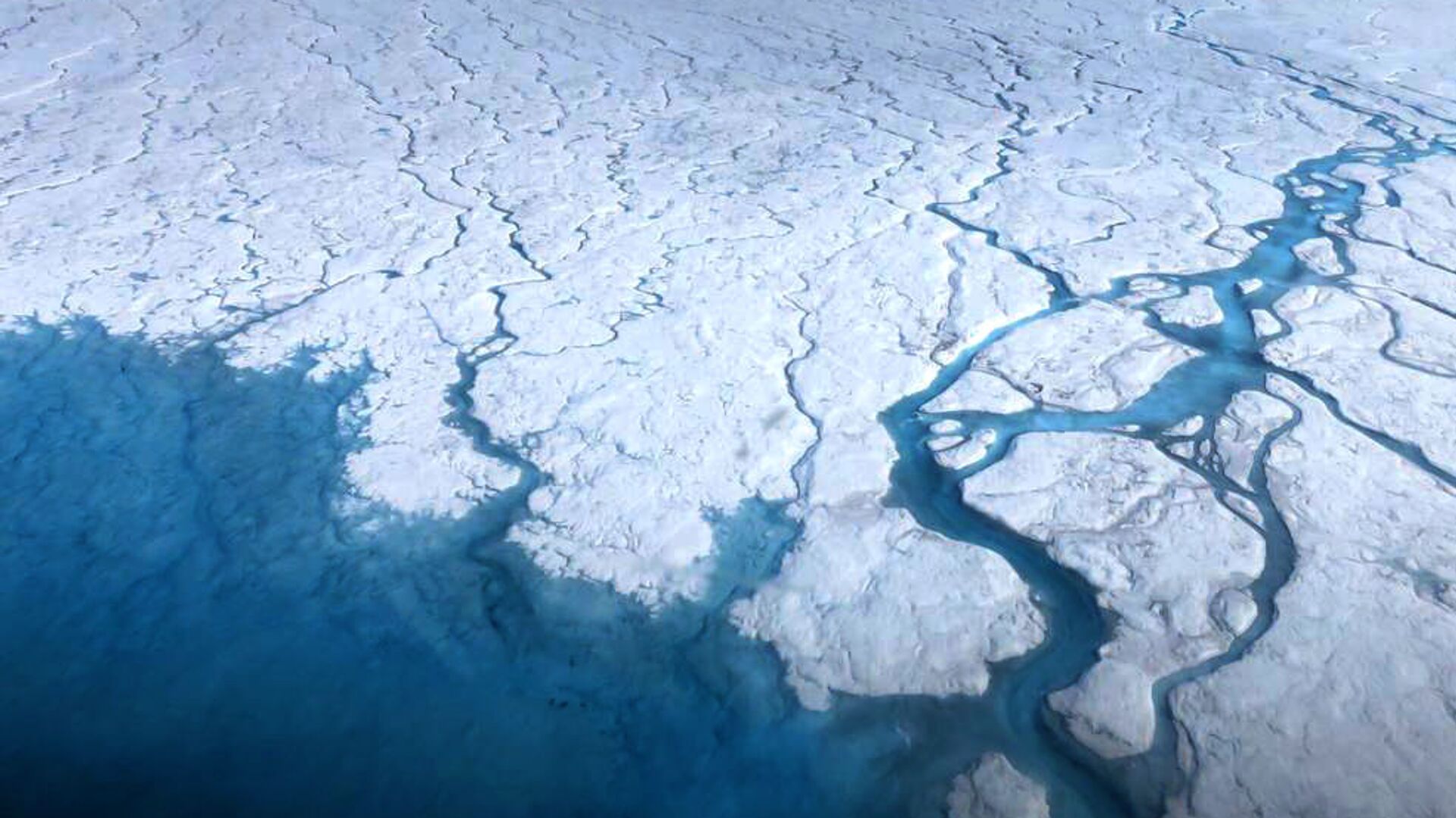https://sputnikglobe.com/20221116/greenland-ice-melting-six-times-faster-than-thought-danish-researchers-say-1104271094.html
Greenland Ice Melting Six Times Faster Than Thought, Danish Researchers Say
Greenland Ice Melting Six Times Faster Than Thought, Danish Researchers Say
Sputnik International
A group of researchers from the Technical University of Denmark have warned that similar underestimations may have occurred in other places, which may lead to... 16.11.2022, Sputnik International
2022-11-16T07:31+0000
2022-11-16T07:31+0000
2022-11-16T07:31+0000
science & tech
greenland
denmark
scandinavia
ice
news
climate
environment
https://cdn1.img.sputnikglobe.com/img/07e5/08/1b/1083735397_0:31:985:585_1920x0_80_0_0_6305ed4e4b32d49d0bf1736ee8737b00.jpg
New observations from Northeast Greenland have indicated a much larger flow of meltwater from the island’s key area than previously thought, which further endangers world sea levels.Even previous calculations have shown that meltwater from the Northeast Greenland Ice Stream (NEGIS) alone could lead to a world sea level rise of approximately 2.5 millimeters by the year 2100.However, using unique global navigation satellite system (GNSS) observations, combined with surface elevation changes and surface speeds obtained from satellite data, new research estimated a six times faster flow of meltwater from Greenland’s ice sheet into the sea. According to the researchers from the Technical University of Denmark (DTU), the meltwater from NEGIS alone will lead to a sea water rise of over 15 millimeters, which corresponds to what the entire Greenland ice sheet has contributed in the past 50 years.The study's first author, DTU professor Shfaqat Abbas Khan estimated that the melting of Greenland's entire ice sheet may also be greater than previously estimated.According to the research, extensive thinning of Greenland ice has already propagated more than 200 km inland, threatening to further hasten the pace of melting.The UN climate panel previously assessed the likely sea level rise by 2100 at 75 centimeters, but this is possibly an underestimate as well, Abbas Khan mused. If the measurements from other places are as underreported as those from Northeast Greenland, the sea level will in all probability have risen by over one meter before 2100, Shfaqat Abbas Khan said.Over the past two decades, ice loss from the Greenland ice sheet has increased, owing to enhanced surface melting and ice discharge to the ocean. Its extent, pace and outlook, however, remain contentious.Theoretically, Greenland’s entire ice sheet contains enough water to raise the oceans by more than seven meters. For the sake of comparison, Antarctica’s ice sheet contains enough to lift ocean levels almost 50 meters.Located between the Arctic and Atlantic oceans, east of the Canadian Arctic Archipelago, sparsely-populated Greenland is the world's largest island. It is also one of the three constituent countries of the Danish Realm alongside Denmark proper and the Faroe Islands.
https://sputnikglobe.com/20210827/greenland-without-its-ice-sheet-6-incredible-things-hiding-under-the-eternal-glacier-1083735374.html
greenland
denmark
scandinavia
Sputnik International
feedback@sputniknews.com
+74956456601
MIA „Rosiya Segodnya“
2022
News
en_EN
Sputnik International
feedback@sputniknews.com
+74956456601
MIA „Rosiya Segodnya“
Sputnik International
feedback@sputniknews.com
+74956456601
MIA „Rosiya Segodnya“
melting ice, northeast greenland ice stream (negis), greenland ice, world's largest island, climate change
melting ice, northeast greenland ice stream (negis), greenland ice, world's largest island, climate change
Greenland Ice Melting Six Times Faster Than Thought, Danish Researchers Say
A group of researchers from the Technical University of Denmark have warned that similar underestimations may have occurred in other places, which may lead to drastic miscalculations of the entire climate situation, as well as estimations regarding measures to counter it.
New observations from Northeast Greenland have indicated a much larger flow of meltwater from the island’s key area than previously thought, which further endangers world sea levels.
Even previous calculations have shown that meltwater from the Northeast Greenland Ice Stream (NEGIS) alone could lead to a world sea level rise of approximately 2.5 millimeters by the year 2100.
However, using unique global navigation satellite system (GNSS) observations, combined with surface elevation changes and surface speeds obtained from satellite data, new research estimated a six times faster flow of meltwater from Greenland’s ice sheet into the sea. According to the researchers from the Technical University of Denmark (DTU), the meltwater from NEGIS alone will lead to a sea water rise of over 15 millimeters, which corresponds to what the entire Greenland ice sheet has contributed in the past 50 years.
The study's first author, DTU professor Shfaqat Abbas Khan estimated that the melting of Greenland's entire ice sheet may also be greater than previously estimated.
“Northeast Greenland is just one example of an area we have looked at with our new method. There will probably be a lot of other places that we have also underestimated strongly,” Shfaqat Abbas Khan told Danish Media.
According to the research, extensive thinning of Greenland ice has already propagated more than 200 km inland, threatening to further hasten the pace of melting.

27 August 2021, 22:10 GMT
The UN climate panel previously assessed the likely sea level rise by 2100 at 75 centimeters, but this is possibly an underestimate as well, Abbas Khan mused. If the measurements from other places are as underreported as those from Northeast Greenland, the sea level will in all probability have risen by over one meter before 2100, Shfaqat Abbas Khan said.
Over the past two decades, ice loss from the Greenland ice sheet has increased, owing to enhanced surface melting and ice discharge to the ocean. Its extent, pace and outlook, however, remain contentious.
Theoretically, Greenland’s entire ice sheet contains enough water to raise the oceans by more than seven meters. For the sake of comparison, Antarctica’s ice sheet contains enough to lift ocean levels almost 50 meters.
Located between the Arctic and Atlantic oceans, east of the Canadian Arctic Archipelago, sparsely-populated Greenland is the world's largest island. It is also one of the three constituent countries of the Danish Realm alongside Denmark proper and the Faroe Islands.




